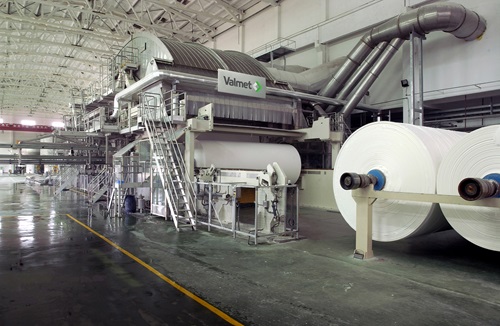Corrosion resistance and high strength mean that duplex materials are ideal to resist wear, withstand heavy loads and provide a long life when exposed to high temperatures and chemicals such as sulfites, nitric acid, oleum and cellulose.

These conditions can be extremely corrosive for some alloys. In addition, the long production runs and heavy cyclic loads experienced by paper machines mean that they can experience mechanical fatigue.
Duplex alloys perform well in these conditions and that gives them an attractive price to performance ratio.
After the first duplex stainless steel grades were developed at our Avesta site in 1930, engineers in the pulp and paper industry were quick to adopt one of these, Avesta 453S, for example to build a Brobeck cooler at a sulfite plant in 1932.
Over the decades since, the pulp and paper industry has been an important market for duplex. A new grade, S31500 was developed in 1970 to combat stress corrosion cracking in digesters where austenitic grades failed after only a couple of months.
This was one of the first modern grades of duplex stainless steel. Unlike the earlier grades, these modern alloys were suitable for welding. That made them suitable for making processing equipment such as suction rollers and washing presses for paper mills, as well as pulp storage towers.
Today, modern duplex grades provide excellent corrosion resistance and high strength in high temperatures, corrosive environments and under intense loads. In addition, lean duplex alloys provide high strength, good corrosion resistance and affordability for some applications.
Duplex stainless steels provide good fatigue performance and resist abrasion, meaning that manufacturers can rely on them to produce high quality paper in long uninterrupted production runs.
We are celebrating the 90 years of duplex stainless steel. Duplex stainless steel was originally developed by Outokumpu in Avesta, Sweden in 1930. As the original inventor of duplex we have both experience and expertise to take the material further.

